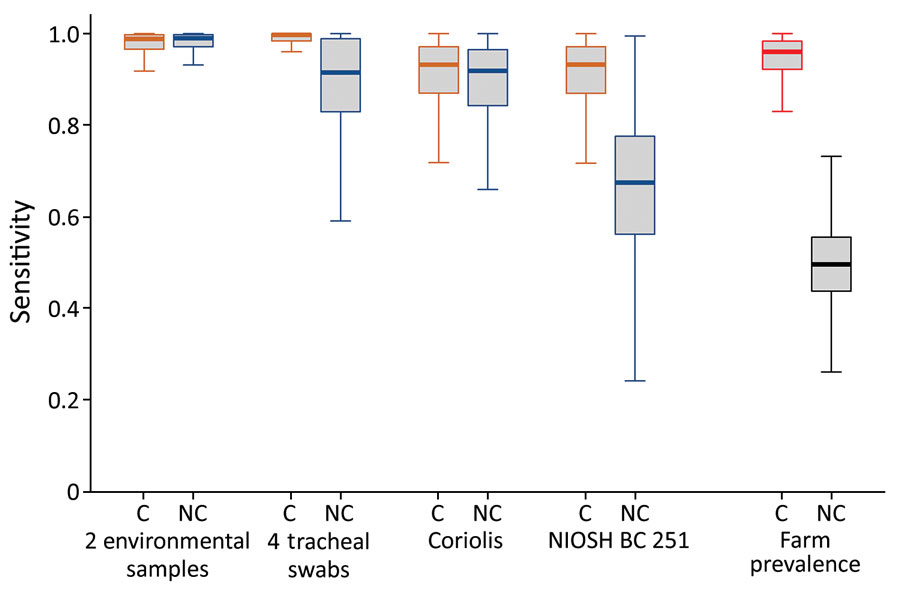Volume 28, Number 7—July 2022
Dispatch
Highly Pathogenic Avian Influenza A(H5N8) Clade 2.3.4.4b Virus in Dust Samples from Poultry Farms, France, 2021
Figure 2

Figure 2. Sensitivity comparison of 4 sampling techniques used to detect highly pathogenic avian influenza A(H5N8) clade 2.3.4.4b virus from 63 poultry farms, France, December 2020–April 2021. Sampling was conducted in poultry houses with and without clinical signs among flocks. Box plots show 95% CIs; horizontal lines in boxes indicate means, error bars SDs. The 2 environmental samples refer to 2 wipes collected in the animal houses, 1 on feeders and 1 on walls. Tracheal swab samples refer to 4 pools of 5 swab samples collected per house. Aerosol samples were collected from 19 poultry houses by using the Coriolis Compact (Bertin Instruments, https://www.bertin-instruments.com) and the NIOSH BC 251 (https://www.cdc.gov/niosh). The NIOSH BC 251 sampling device has 3 fractions for different particle sizes; fraction 1 for >4 µm, fraction 2 for 1–4 µm, and fraction 3 for <1 µm. Farm-level disease prevalence was 0.96 for houses in which animals had clinical signs and 0.5 in houses in which animals did not have clinical signs. C, clinical signs; NC, no clinical signs; NIOSH, National Institute for Occupational Safety and Health.